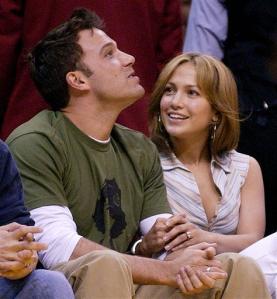I came across an article written by Gerald Posner (of the dailybeast.com) suggesting that the King of Pops Michael Jackson was trying to land himself in the hospital with meds to avoid concert dates but this accidentally backfired and he ended up dead............
A close Michael Jackson confidant tells The Daily Beast's Gerald Posner he believes the star triggered his death with a foolhardy plan to void a concert commitment: mixing pills to prompt a minor hospital visit. Plus, behind the scenes at the stormy meetings where Jackson’s advisers told him he was insolvent; threats that creditors would seize his assets if he didn’t do the concerts; friends’ worries that he couldn’t physically do the tour; and the pop star’s bartering of performances in exchange for works of art. A close confidant of Michael Jackson tells The Daily Beast that he believes that the superstar was so determined to avoid a rigorous tour schedule that he intentionally took a large amount of prescription drugs in order to induce a hospital visit—potentially triggering a medical escape clause in his performance contract—but wound up accidentally overdosing instead.
“Like a child who doesn’t want to go to school, Michael thought he could get away from his obligations if he had a ‘note from the doctor.’”
This top adviser, who spoke about this explanation for the first time on the condition of anonymity, says that he believes Jackson was determined to force the AEG Group, the promoter of his 50-concert London series scheduled to commence next month, to reduce the number of dates. But the adviser says that Jackson was also well aware that he was subject to serious cancellation penalties if he failed to show up for any gigs. Medical infirmity, a standard clause in most contracts like this, might have provided him a consequence-free out. AEG did not return calls for comment.
“Like a child who doesn’t want to go to school,” the team member tells me, “Michael thought he could get away from his obligations if he had a ‘note from the doctor.’”
This source, who was familiar with Michael’s use of prescription painkillers he had used with increasing frequency over a decade, says he believes that Jackson was determined to prompt that “note” by mixing pills.
This explanation is supported by the fact that Jackson asked his personal physician, Dr. Conrad Murray, to stay overnight for the hours before he died. Dr. Murray’s attorneys say it was not the first time he had stayed overnight, but such a request was not typical. Sources in the Jackson camp tell me that Jackson knew that Dr. Murray, when he did stay, checked on him regularly. In other words, Jackson would have thought he had a safety net.
It’s also clear, based on a half-dozen sources in Jackson’s business and financial entourage, that Jackson desperately wanted out of the commitment to 50 concerts, which were to be held at London’s O2 Arena. Earlier this month, only weeks before his death, someone in the Jackson camp, presumably with the singer’s blessing, leaked information that the pop star was “reportedly fuming” at the expanded concert schedule and pace and demands of preparation. (At the Los Angeles dance studio where he practiced for his London shows, he once stopped outside to talk to fans who gathered daily. One fan told a British tabloid, The Sun, that Jackson said to the group, “Thank you for your love and support, I want you guys to know I love you very much….I’m really angry with them booking me up to do 50 shows. I only wanted to do 10, and take the tour around the world to other cities, not 50 in one place. I went to bed knowing I sold 10 dates, and woke up to the news I was booked to do 50.”)
That fateful shift—from 10 dates to 50—has roots going back to last September when, The Daily Beast has learned, his advisers held a summit meeting with him to drive home the concept that he was virtually insolvent. Since his 2005 acquittal on sexual-abuse charges, he initially supported himself at the largesse of Abdullah bin Hamad Al Khalifa, son of Bahrain's king. When that money pipeline was cut off, The Daily Beast learned that Jackson resorted to doing one-night gigs for private parties for Arab sheiks and Russians in London. These gigs, I am told, commanded up to $2.5 million for an hour performance—or sometimes were bartered in exchange for works of art.
But as fast as the money came in, Jackson spent it. His major asset, his music catalog that included the Beatles songs, was half owned by Sony, and his portion had so many liens and loans against it that it could take a probate court years to unravel its real value. By November, the Jackson confidant says, the pop star was given an ultimatum by his advisers. Either commit to the London concert tour or have creditors seize whatever assets he still prized.
At a meeting in Las Vegas in late 2008, Jackson met with Randy Phillips, Rod Stewart’s former manager and now the chief executive of AEG, who is one of the world’s largest concert promoters. The concerts could raise tens of millions of dollars for Jackson, money he desperately needed. The sticking point was over the number of performances. AEG, owned by secretive American billionaire Philip Anschutz, wanted dozens.
Friends knew that Michael was frail, his weight at 112 lbs. on his 5-foot-11 frame the lowest it had been in years. He had not toured publicly in over a decade. I’m told that even some of his old UAE friends, like the rally-car driver Mohammad Ben Sulayem, had doubts that Jackson was physically fit enough to complete a grueling tour. Jackson apparently knew his own limits. He insisted on no more than 10 performances.
On March 5, Jackson held a London news conference in which he announced to the press and fans that he would perform 10 concerts there beginning July 8. The concerts were dubbed “This Is It,” and Jackson told the group, “These will be my final shows performing in London. ‘This Is It’ really means this is it.”
Behind the scenes, AEG and Jackson’s financial advisers had evidently worked out a deal that required the pop star to do more shows. When Jackson learned of that after the press conference, it kicked off several days of stormy meetings, with Jackson at times threatening to balk at doing any. Jackson, as usual according to those who knew him, had failed to grasp all the obligations of the financial arrangement he had entered. Five days later, on March 10, a brief press release added 11 dates to the 10 that Jackson had already announced. The next day, the number of shows expanded to 45, and would soon be 50, extending into February 2010. The shows were scheduled so Jackson had at least one night off between each, and AEG released a statement that Jackson was in "tremendous condition after a battery of tests.”
By April, Jackson’s advisers were in talks with two hoteliers in Las Vegas to create a six-month show for the pop star, starting soon after his London dates finished in early 2010, which would fetch him, I was told, up to $100 million. Jackson, according to one close adviser, resented the pressure to start performing to pay past bills and avoid losing his music catalog.
Shortly after that news broke, AEG announced Jackson’s tour dates slipped. The opening night was moved from July 8 to the 13th and performances previously scheduled for July 10, 12 and 14 were moved to March 2010.
It is little wonder that with so much at stake, AEG had already hired a full-time tour doctor for the pop star. It was Jackson, however, who chose Dr. Murray. Jackson had met Murray in 2006 in Las Vegas, when one of Jackson’s children had become ill. A member of Jackson’s security detail knew Murray and called him. The doctor made a house call to Jackson’s hotel, treated the child, and the pop star and physician became fast friends.
When Jackson asked Murray to become the tour doctor, the Las Vegas and Houston-based Murray immediately accepted (unknown to Jackson, he had his own financial difficulties, and the lucrative AEG position was a godsend).
Based on an interview with senior members of Jackson’s entourage during the past year, Jackson picked Dr. Murray in part because he thought a “friend” would be less inquisitive about his medical past than a doctor selected independently by AEG. A source close to Jackson’s legal team says that Jackson complained often about the rigors of the training schedule.
It was during a routine check on Jackson during the early morning of June 26 when Dr. Murray noticed his client seemed to be in medical distress with a low pulse, unresponsive to questions or touch. Murray, a large man, began performing CPR on Jackson’s chest.
There are conflicting accounts on whether Dr. Murray had his cellphone with him. Some sources believe he did not, while others say he did but he did not want to stop the CPR to call 911, and thus risk losing Jackson’s pulse. What is indisputable: He did not make a call from his cell to 911. Instead, he kept shouting for help. Dr. Murray later told investigators that no one responded for at least 20 minutes. There was a landline phone in the bedroom, but Dr. Murray’s legal team says he couldn’t use it since there “was a security feature that blocked outside calls.” Again, it’s not clear if Dr. Murray tried to use that phone or just assumed it wouldn’t call out.
It was not until a Jackson employee arrived and called 911 on his own cellphone—according to Dr. Murray’s legal team—that emergency help was dispatched. By the time Murray, Jackson, and the ambulance arrived at the emergency room, Jackson still had a low pulse. But nothing the ER doctors did could revive him.
Before he could leave the hospital, Los Angeles police investigators were already questioning Dr. Murray. Before that, Dr. Murray, with a Jackson manager, broke the news to Jackson’s sister, La Toya, and her brother, Jermaine, that their brother was dead. Possibly, it turns out, the victim of self-inflicted injuries from a plan gone very wrong.
(more details can be found here: http://www.thedailybeast.com/blogs-and-stories/2009-06-30/jacksons-final-panic/?cid=hp:mainpromo3)
























